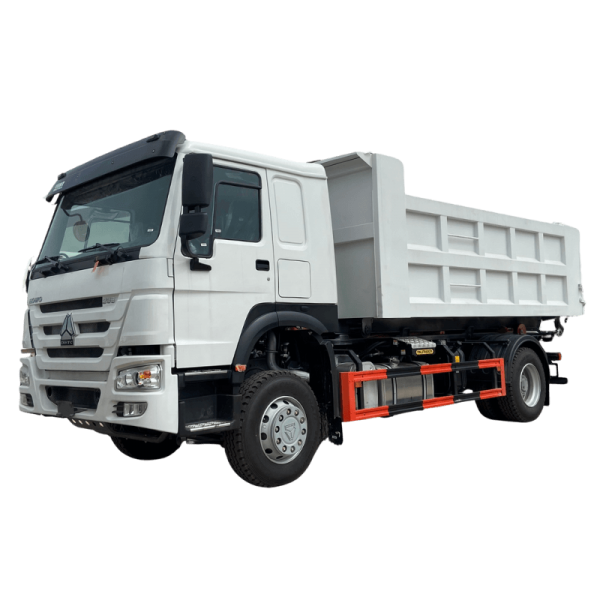Introduction
Garbage compactor trucks play a crucial role in managing waste and keeping our cities clean and hygienic. These specialized vehicles are designed to efficiently collect and compress large volumes of waste, making them an essential tool for municipalities, waste management companies, and other organizations responsible for waste disposal. In this comprehensive guide, we will explore the various features of garbage compactor trucks that make them effective and efficient in their role.
1. Types of Garbage Compactor Trucks
There are several types of garbage compactor trucks available on the market, each designed for specific purposes and waste collection needs. The most common types include:
- Rear Loader Compactor Trucks: These trucks feature a compactor mechanism at the rear, allowing waste collectors to load garbage from residential or commercial bins into the hopper for compaction.
- Front Loader Compactor Trucks: Front loader compactor trucks are commonly used for commercial and industrial waste collection. They are equipped with a front-loading mechanism that lifts and empties large dumpsters into the hopper for compaction.
- Side Loader Compactor Trucks: Side loader compactor trucks are designed for curbside waste collection in residential areas. https://www.heli-truck.com/water-tank-truck/ -loading mechanism allows waste collectors to pick up bins placed along the street and load them into the compactor for compression.
- Transfer Station Compactor Trucks: These specialized trucks are used to transport waste from collection points to transfer stations or landfills. They are equipped with a high-capacity compactor to compress waste for efficient transportation.
2. Key Features of Garbage Compactor Trucks
Garbage compactor trucks are equipped with a range of features that enhance their performance and efficiency. Some of the key features include:
- Compactor Mechanism: The heart of a garbage compactor truck is its compactor mechanism, which compresses waste to maximize the truck's carrying capacity. The compactor can be hydraulic or pneumatic, depending on the type of truck and its intended use.
- Hopper: The hopper is the opening where waste is loaded into the compactor. It is designed to accommodate different types and sizes of waste containers, such as bins, dumpsters, or bags.
- Ejection System: After waste is compacted, it needs to be ejected from the truck for disposal. Garbage compactor trucks are equipped with ejection systems that release the compacted waste into a designated container or disposal site.
- Control Panel: Modern garbage compactor trucks are equipped with user-friendly control panels that allow operators to monitor and control the compaction process. The control panel may include features such as compaction settings, safety alerts, and diagnostics.
- Safety Features: Garbage compactor trucks are equipped with various safety features to protect operators and prevent accidents. These features may include backup cameras, alarms, emergency stop buttons, and hydraulic safety locks.
- Waste Handling Options: Depending on the type of waste being collected, garbage compactor trucks may offer different waste handling options, such as recycling compartments, liquid containment systems, or odor control mechanisms.
- Chassis and Suspension: The chassis and suspension of a garbage compactor truck are designed to withstand the heavy loads and demanding operating conditions encountered during waste collection. They are reinforced for durability and stability on the road.
3. Advanced Technologies in Garbage Compactor Trucks
In recent years, advancements in technology have transformed the design and functionality of garbage compactor trucks. Some of the advanced technologies incorporated into modern compactor trucks include:
- Telematics Systems: Telematics systems enable remote monitoring and management of garbage compactor trucks. Operators can track the truck's location, performance metrics, and maintenance schedules in real-time, improving operational efficiency and fleet management.
- Automated Collection Systems: Automated collection systems use robotics and sensors to streamline the waste collection process. These systems can autonomously empty bins, sort recyclables, and optimize collection routes, reducing labor costs and increasing productivity.
- GPS Navigation: GPS navigation systems help garbage compactor truck drivers navigate the most efficient routes for waste collection. By avoiding traffic congestion and road closures, GPS technology improves route optimization and on-time delivery of waste.
- RFID Tagging: Radio-frequency identification (RFID) tagging is used to track and manage waste containers. RFID tags can be attached to bins and dumpsters, allowing operators to monitor collection frequencies, track inventory, and optimize collection schedules.
- Energy-Efficient Systems: Energy-efficient systems, such as regenerative braking and idle reduction technologies, help garbage compactor trucks minimize fuel consumption and reduce emissions. By optimizing engine performance and power usage, these systems contribute to environmental sustainability.
4. Maintenance and Service Considerations
Proper maintenance and servicing are essential to ensure the reliable performance and longevity of garbage compactor trucks. Regular maintenance checks and servicing can help prevent breakdowns, extend the lifespan of components, and optimize operational efficiency. Some key maintenance considerations include:
- Regular Inspections: Conduct routine inspections of the compactor mechanism, hydraulic systems, electrical components, and chassis to identify any signs of wear or damage.
- Lubrication: Keep all moving parts of the garbage compactor truck well-lubricated to reduce friction, prevent corrosion, and maintain smooth operation.
- Cleaning: Regularly clean the hopper, compactor mechanism, and ejection system to remove debris, residue, and odors that can affect performance and hygiene.
- Training: Provide training to operators on proper operation, safety procedures, and maintenance practices to ensure the safe and efficient use of garbage compactor trucks.

- Emergency Response Plan: Develop an emergency response plan for handling breakdowns, accidents, or other unexpected events that may occur during waste collection operations.
Conclusion
Garbage compactor trucks are indispensable tools in waste management, offering efficient and effective solutions for collecting and disposing of large volumes of waste. By understanding the key features, advanced technologies, and maintenance considerations of garbage compactor trucks, operators and organizations can maximize the performance and lifespan of these essential vehicles. With ongoing advancements in technology and design, garbage compactor trucks continue to evolve to meet the growing demands of sustainable waste management practices.
